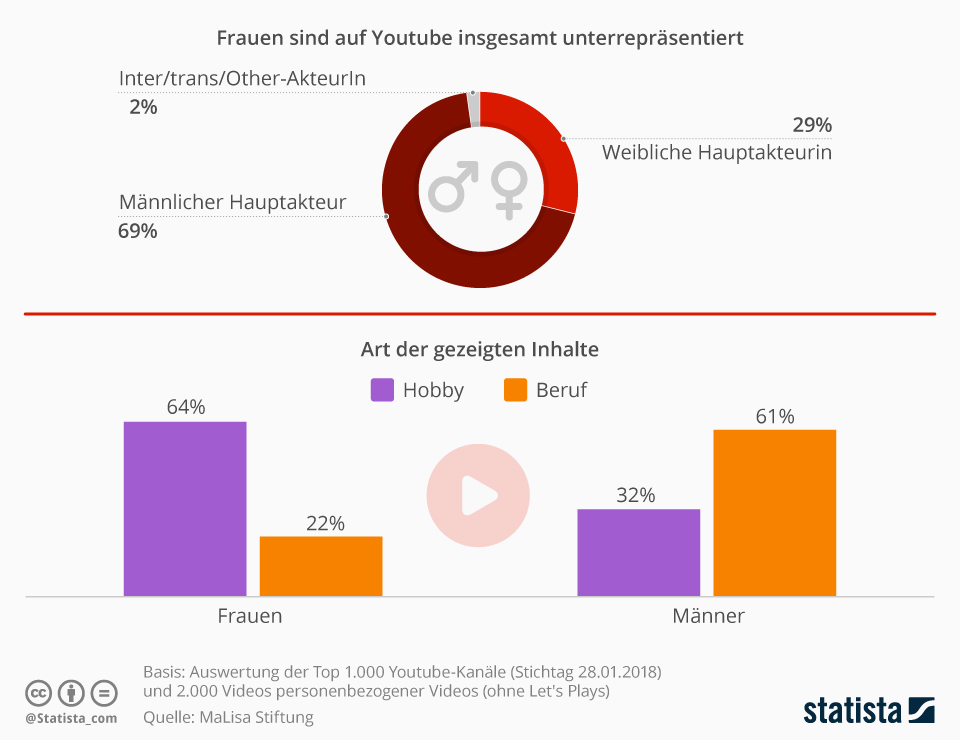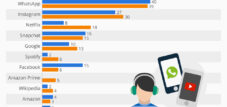Posing, applying makeup, cooking – when women and girls present themselves on social media, they often adhere to stereotypical roles that many thought had long been overcome. This is the finding of a study by the MaLisa Foundation, founded by actress Maria Furtwängler and her daughter Elisabeth. A 2017 study already demonstrated that women are underrepresented in film and television and are cast in stereotypical roles.
The current study shows similar findings for YouTube and Instagram. As the graphic illustrates, women are generally underrepresented on the video streaming service YouTube. However, when they do appear as main participants in videos, it is primarily in connection with their hobbies, such as sewing, crafting, or makeup. For male participants, it is much more frequently their professional activities that are the focus.
When it comes to topics, female YouTubers are successful when they conform to a role model that, according to Furtwängler, is reminiscent of the 1950s. The most common topics for women on the top 1000 channels in Germany are beauty, relationships, food, fashion, and household management. And even in music videos, which are now primarily consumed via YouTube, women are still portrayed as sexy and passive.
This stereotyping has little to do with free choice, as the study also shows. Interviews with 14 successful female YouTubers reveal that it is difficult to break free from the beauty stereotype: “Having a strong opinion of your own diminishes your financial value because certain companies then no longer want to be associated with you,” said one interviewee.
Posing, make-up, cooking – when women and girls present themselves in social media, they often orientate themselves on role clichés that some believed had long since been overcome. This is the result of a study by the MaLisa Foundation of actress Maria Furtwängler and her daughter Elisabeth. In a study from 2017, they already showed that women are underrepresented in film and television and are cast in cliché roles.
The current study now shows similar results for YouTube and Instagram. As the graphic shows, women are under-represented overall in the video streaming service YouTube. If, however, they appear as main actors in videos, it is mainly with their hobby activities, such as sewing, handicrafts or make-up. For male actors, it is much more often the professional activity that is the subject of discussion.
When it comes to the topics, YouTube women are successful if they correspond to a role model that, according to Furtwängler, corresponds to that of the 1950s. The most common topics for women in the top 1000 channels in Germany are beauty, partnership, food, fashion, and household. And even in music videos, which are now mainly consumed on YouTube, women are still sexy and passively staged.
This stereotyping has little to do with free choice, as the study also shows. From interviews with 14 successful YouTube women, it emerges that it is difficult to break out of the subject of beauty: “A strong own opinion diminishes your financial value because then certain companies no longer want to show themselves with you,” said one interviewee.


